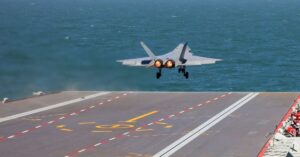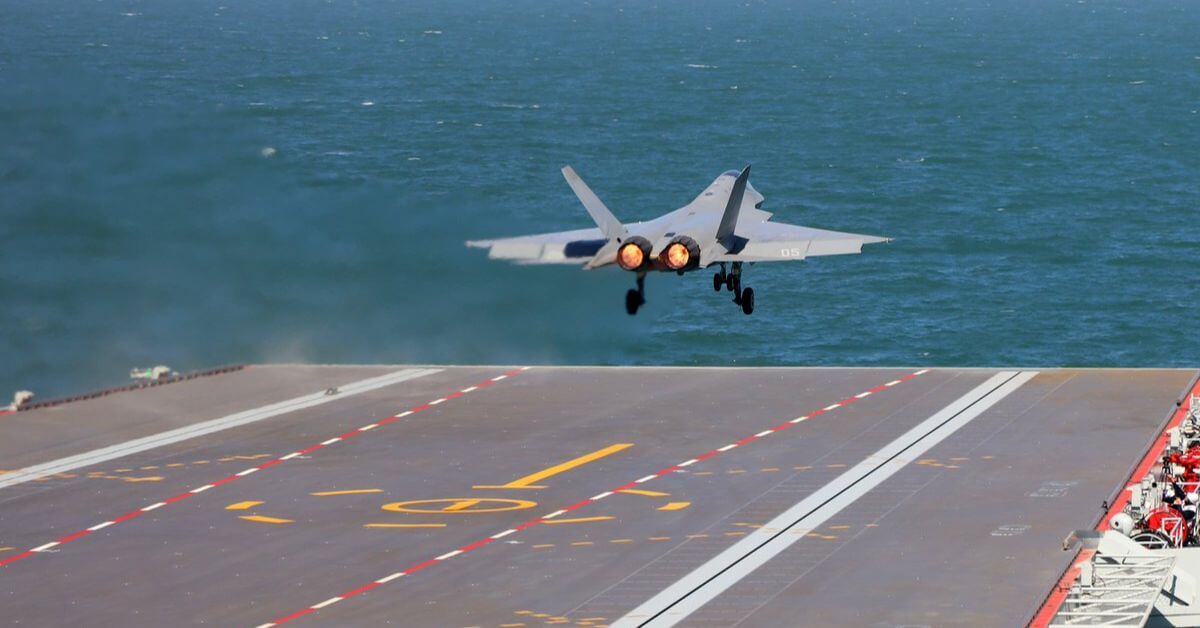
Comoros Exposes Over 60 Tankers Falsely Flagged Under Its Ship Registry
September 23, 2025
MSC Elsa 3 Wreck Off Kerala Causes Severe Ecological Damage, Study Finds
September 23, 2025

China’s newest and most advanced aircraft carrier, the Fujian, has successfully conducted catapult launches and arrested recoveries of aircraft for the first time. This milestone marks a major step forward for the People’s Liberation Army Navy (PLAN) and demonstrates the ship’s electromagnetic aircraft launch system (EMALS) in action.
The video shows three types of aircraft operating from the Fujian: the fifth-generation J-35 stealth fighter, the 4.5-generation J-15T fighter, and the KJ-600 airborne early warning and control aircraft.
All three were shown being prepared for launch, taking off from the catapult, and landing back on deck. Footage also showed formation flights with the J-15D electronic warfare jet and aerial views of the planes arranged on the carrier deck.
Three types of carrier-based aircraft, including J-15T, J-35 and KJ-600, completed catapult launch and landing training on board the PLANS Fujian for the first time this year, demonstrating the Fujian’s capability of electromagnetic catapult and recovery operations. pic.twitter.com/XATTs1yCtu
— ChinaNavy (@China_Navy) September 22, 2025
The Fujian is China’s first carrier fitted with catapults, unlike the country’s earlier carriers, Liaoning and Shandong, which use ski-jump ramps. Catapults allow aircraft to launch with heavier fuel and weapons, increasing range and combat capability.
The J-15T, one of the three aircraft tested, is a catapult-capable development of the Soviet-era Su-33 Flanker design. While earlier J-15 variants were optimised for short takeoff but assisted recovery (STOBAR) operations from ski-jump decks, the T-model includes a launch bar and structural reinforcements for catapult use. This adaptation makes it specifically suited to the Fujian’s flight deck.
In August 2024, imagery showed J-15s positioned on the Fujian’s deck and flying overhead, but it was unclear at the time if launches or landings had actually taken place. The newly released video confirms that full flight operations are now underway.

The Fujian has been on sea trials since May 2024 and is currently sailing in the South China Sea. Analysts say the successful tests suggest the carrier may be commissioned into the PLAN within weeks, with further certifications and trials likely over the coming months.
The Fujian’s EMALS system is similar to the U.S. Navy’s USS Gerald R. Ford, the only other carrier with this technology. However, while the Ford is nuclear-powered, the Fujian is conventionally powered and will need periodic refueling.
Chinese commentators have presented the new carrier as a symbol of growing national strength. State-run Global Times quoted military analyst Fu Qianshao as saying that only those with “ill intentions” should feel concerned about the ship’s presence.
References: CNN, TWZ
Source: Maritime Shipping News


